Posted by
Sudhir Sharma
on
December 05, 2023


Are you ready for an adventure in the wild heart of India? Kanha National Park, located in the central state of Madhya Pradesh, is a treasure trove of biodiversity and an ideal destination for wildlife enthusiasts. This comprehensive guide will help you plan
your visit, understand the booking process for safaris, and immerse yourself in the mesmerizing world of Kanha Tiger Reserve.
Kanha National Park - An Overview
Kanha National Park is one of the most renowned tiger reserves in India, spanning over 940 square kilometers. It is a prime habitat for the Bengal tiger, among other incredible species, and boasts lush forests, meadows, and picturesque landscapes. The park
was the inspiration for Rudyard Kipling's "The Jungle Book," making it a must-visit for nature lovers and literary enthusiasts alike.
Safari Booking at Kanha
1. Types of Safaris
-
Jeep Safari: Explore the core zones of the park, getting up close and personal with the wildlife.
-
Elephant Safari: A unique opportunity to view animals from atop an elephant, providing a different perspective.
-
Canter Safari: Ideal for larger groups, this safari offers an open-air bus experience for wildlife viewing.
2. Booking Process
To secure your Kanha
National Park safari Booking, visit the official Kanha National Park website or contact a registered tour operator, call +91
7014717217. Advance booking is highly recommended, especially during peak seasons, to ensure you get the dates and zones you prefer.
3. Best Time to Visit
Kanha National Park is open from October to June, with the best wildlife sightings during the cooler months. The park remains closed during the monsoon season (July-September).
:max_bytes(150000):strip_icc()/_DSC0297_Snapseed_Fotor-590448a25f9b5810dcf78a5a.jpg)
Wildlife Encounters
1. Bengal Tigers
Kanha is famous for its thriving tiger population. Keep your eyes peeled for the majestic Bengal tigers, a sight you'll treasure forever.
2. Other Fauna
Apart from tigers, you can spot leopards, Indian wild dogs, barasingha (swamp deer), and various species of deer, monkeys, and birds. The park's incredible diversity will leave you awe-inspired.
Accommodation Options
Kanha offers a range of lodging options to suit all budgets. From luxury resorts to comfortable homestays, there's something for everyone. Make sure to book your accommodation well in advance, especially during the peak tourist season.
For further info or booking assist please don’t hesitate
to contact us at info@culturalsafaritours.com or Call us or WhatsApp at +917014717217.
You also get detailed information.
|
Posted by
Amit Singh
on
December 05, 2023


India’s Golden Triangle is a mesmerizing journey that weaves together the historical, cultural, and architectural treasures of Delhi, Agra, and Jaipur. This iconic tourist circuit showcases the diversity and magnificence
of India, offering a captivating blend of ancient heritage, bustling bazaars, grand monuments, and vibrant traditions. In this ultimate guide to India’s Golden
Triangle Tours, we delve into the captivating experiences that await you in each city, ensuring that your journey is nothing short of extraordinary.
Delhi: The Heart of India’s Past and Present

As the starting point of your Golden Triangle adventure, Delhi is a city of contrasts, seamlessly blending the old and the new. Begin by exploring the UNESCO-listed Qutub Minar, a towering masterpiece of Mughal architecture.
Dive into the historical legacy of the Red Fort, where every wall tells a story of the Mughal emperors. The India Gate stands tall as a war memorial, while Humayun’s Tomb reflects the grandeur of Persian-inspired design.
Dive into the heart of Delhi’s culture by wandering through the bustling markets of Chandni Chowk, where narrow alleys brim with aromatic spices, vibrant fabrics, and delectable street food. A visit to the Lotus Temple,
a Bahá’í House of Worship, showcases modern architectural brilliance and offers a serene space for meditation. For a touch of spirituality, Gurudwara Bangla Sahib provides a heartwarming experience as you participate in the communal kitchen (langar).
Agra: The Enchanting City of the Taj Mahal

Moving on to Agra, the city of romance and architectural marvels, the Taj Mahal stands as the ultimate highlight. This ivory-white marble mausoleum is a UNESCO World Heritage Site and a testament to eternal love.
As you witness the sun painting the monument with myriad hues, you’ll understand why it’s considered one of the wonders of the world.
Agra Fort, a red sandstone fortress that once served as the main residence of the Mughal emperors, offers a glimpse into the opulent lifestyle of the past. The tomb of Itimad-ud-Daulah, often referred to as the “Baby
Taj,” features intricate inlay work that foreshadows the beauty of the Taj Mahal.
Jaipur: The Pink City’s Royal Grandeur

Completing the Golden Triangle is Jaipur, the flamboyant capital of Rajasthan known for its distinctive pink architecture. Begin your exploration at the Amber Fort, a hilltop fortress that exudes a blend of Rajput
and Mughal architectural styles. The Hawa Mahal, or Palace of Winds, is an intricately designed facade that allowed royal ladies to observe street festivities without being seen.
Discover the City Palace, a complex that houses museums, courtyards, and the Jantar Mantar observatory, which features architectural instruments used to study celestial bodies. Explore the vibrant markets
and bazaars, where you can find exquisite handicrafts, textiles, and gemstones.
Golden Triangle Tours: Tailored Experiences

Golden Triangle Tours offer a range of experiences to suit every traveler’s preferences. From luxury stays in heritage hotels to immersive cultural interactions, there’s something for everyone. Explore
the local cuisine, which varies from spicy street food to royal Rajasthani thalis. Participate in traditional dance performances, mehndi (henna) sessions, and camel rides for an authentic taste of the region’s culture.
The Best Time to Visit
The Golden Triangle’s charm is best experienced between October and March when the weather is pleasant and suitable
for sightseeing. The scorching summer months from April to June and the monsoon season from July to September are less recommended due to extreme temperatures and heavy
rainfall.
Conclusion
India’s Golden Triangle Tours offer an immersive journey through time and culture, showcasing the essence of India’s heritage, diversity, and vibrancy. From the bustling streets of Delhi to the ethereal
beauty of the Taj Mahal and the royal grandeur of Jaipur, each city offers a unique tapestry of experiences. Whether you’re an architecture enthusiast, a history buff, or a cultural explorer, the Golden Triangle promises an unforgettable adventure that will
leave an indelible mark on your heart and soul.
|
Posted by
Amit Singh
on
December 02, 2023

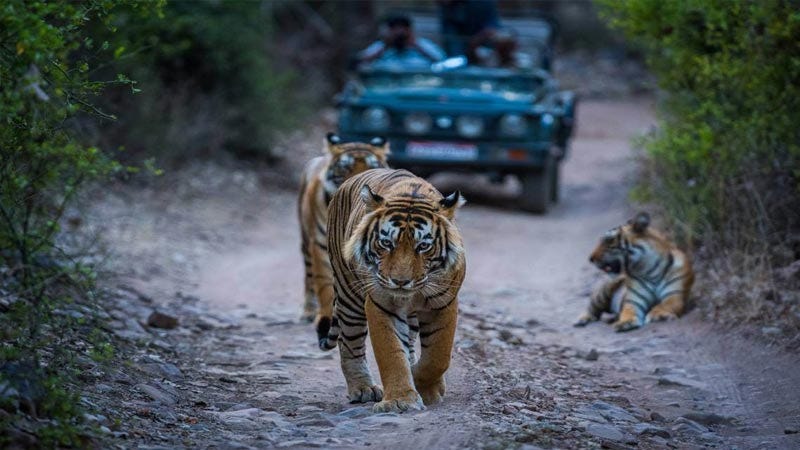
Rajasthan, known as the Land of Kings, is not only celebrated for its magnificent temples and historical forts but also for its rich wildlife. The state boasts 21 wildlife sanctuaries and national parks, offering a diverse range
of flora and fauna. Let’s explore the top 5 wildlife safaris in Rajasthan for an unparalleled experience in nature.
1. Sariska Tiger Reserve, Alwar

Sariska National Park, located in the Alwar district, spans 866 sq kilometres and is surrounded by the picturesque Aravali ranges. Once a hunting preserve for the royal family of Alwar, it transformed into a wildlife reserve
in 1955 and joined Project Tiger in 1978. The reserve is home to around 27 tigers, along with various other wildlife species.
Trip:
Delhi Sariska Day Tour
Best Time to Visit: November to March
Stay Recommendation: Little Affair — A resort near Sariska offering
proximity to the reserve, luxurious stay, and various recreational activities.
2. Ranthambore National Park, Sawai Madhopur
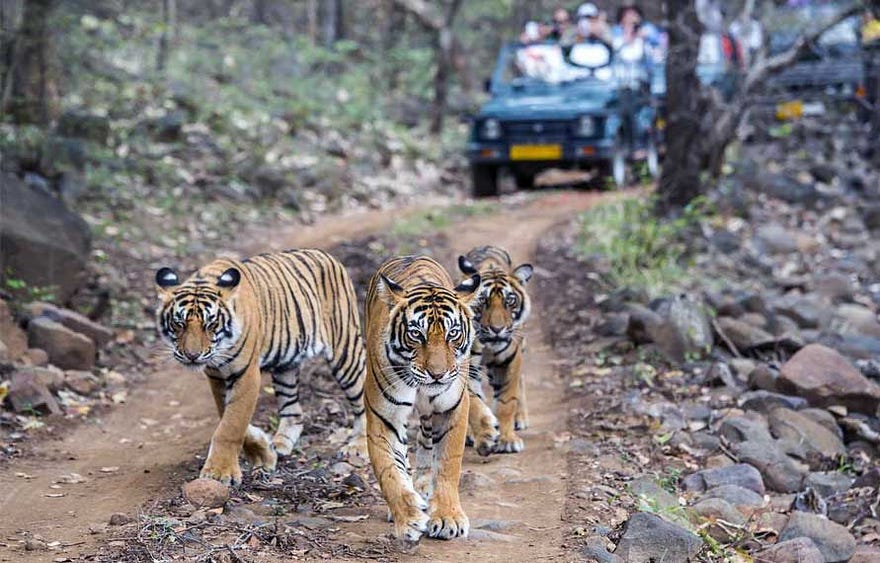
Established in 1980, Ranthambore National Park is spread over 1700 sq km and is renowned for its growing Bengal Tiger population. The rugged landscape, Banas and Chambal rivers, and a variety of wildlife, including crocodiles,
leopards, and langurs, make it a thrilling destination.
Suggested Tour:
Delhi Ranthambore Tour
Tiger Count: 80, as per the latest reports
3. Kumbhalgarh Wildlife Sanctuary, Rajsamand
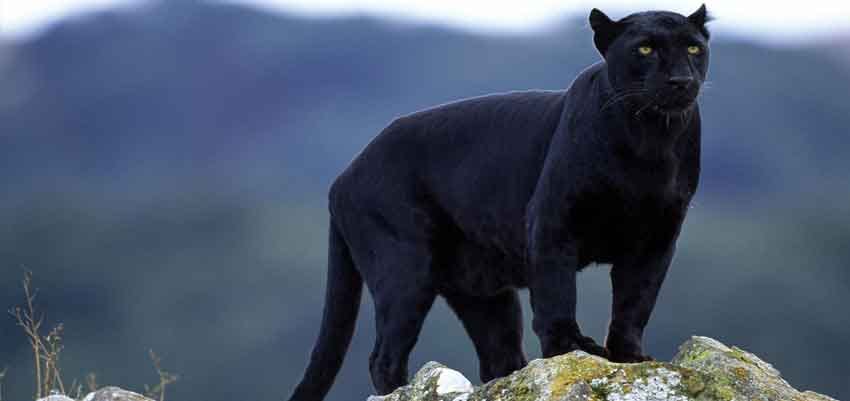
Part of the Kathiawar-Gir dry deciduous forests ecoregion, Kumbhalgarh Wildlife Sanctuary is named after the Kumbhalgarh Fort. This sanctuary in Rajsamand District is rich in wildlife, housing animals like Indian hares, sambhars,
leopards, and a variety of birds.
4. Jawai Leopard Reserve, Pali

Situated near Sumerpur town in Pali District, Jawai Leopard Reserve offers a thriving ecosystem for leopards, crocodiles, and diverse bird species. The uneven topography provides an excellent setting for leopard sightings.
For Inquiries:
info@indiadrivertours.com
5. Desert National Park, Rajasthan

One of the world’s largest national parks, Desert National Park covers an area of 3162 sq km near Barmer and Jaisalmer. Known for its Thar Desert ecology, the park is a haven for bird enthusiasts, featuring a variety of eagles,
falcons, and the endangered Great Indian bustards. Fossils of dinosaurs dating back over 180 million years add a unique dimension to this park.
Embark on these wildlife safaris in Rajasthan to witness the untamed beauty of nature and create memories that last a lifetime.
|
Posted by
Neha Rawat
on
November 27, 2023

Mathura, a city steeped in history and spirituality, is considered one of the holiest places in Hinduism. Nestled on the banks of the sacred Yamuna River in the northern Indian state of Uttar Pradesh, Mathura is believed to be the birthplace of Lord Krishna,
making it a significant pilgrimage destination for those embarking on a
Mathura pilgrimage tour. The city is adorned with numerous temples, each with its unique architecture, religious significance, and cultural importance. In this comprehensive guide, we will delve into the top 10 popular temples in Mathura and Vrindavan,
offering a glimpse into the rich tapestry of spirituality that defines this ancient city.
1. Shri Krishna Janmabhoomi Temple
The Shri Krishna Janmabhoomi Temple stands as a testament to the deep-rooted devotion centered around Lord Krishna's birthplace. Pilgrims enter the temple complex through the narrow lanes of Mathura's old city, eventually arriving at the sacred spot. The
main sanctum houses the prison cell, marked as the exact location where Lord Krishna is believed to have been born. The temple's architecture reflects a blend of various styles, showcasing intricate carvings and artistic elements. Pilgrims often engage in
rituals, prayers, and circumambulation of the main deity, seeking blessings for prosperity and spiritual fulfillment. The atmosphere is charged with devotion, especially during festivals like Janmashtami, when the temple witnesses a surge in visitors from
across the globe.
2. Dwarkadhish Temple
Dwarkadhish Temple, a masterpiece of 19th-century architecture, exudes a sense of grandeur and divine serenity. Dedicated to Lord Krishna, the temple's towering spires and ornate carvings draw visitors into its spiritual embrace. The main shrine, adorned
with a beautiful idol of Dwarkadhish, becomes the focal point for devotees during the daily aartis and religious ceremonies. The temple's courtyards and surrounding markets buzz with activity, offering a unique blend of religious fervor and cultural vibrancy.
The temple's significance extends beyond religious rituals, playing a vital role in preserving and promoting the rich cultural heritage of Mathura.
3. Banke Bihari Temple
The Banke Bihari Temple, nestled in the heart of Vrindavan, is a revered shrine dedicated to the mischievous and charismatic Lord Krishna in his Banke Bihari form. The temple's sanctum showcases the mesmerizing image of Banke Bihari, known for his enchanting
charm and playful demeanor. Devotees believe that the eyes of the deity have a captivating quality that draws them into a spiritual trance. The temple's architecture, marked by simplicity and elegance, contrasts with the vibrant energy within. Pilgrims throng
the temple premises, especially during the famous 'Jhulan Yatra' and 'Holi' festivals, adding to the joyous atmosphere that permeates this sacred space.
4. Prem Mandir
Prem Mandir, aptly named the "Temple of Love," is a modern marvel that captivates visitors with its intricate marble architecture and devotion to the eternal love between Radha and Krishna. Inaugurated in 2012 by the revered spiritual leader Kripalu Maharaj,
the temple complex is a symphony of white marble adorned with meticulously crafted reliefs depicting episodes from the lives of Radha and Krishna. The temple's uniqueness lies in its grandeur, both in daylight and when illuminated after sunset. The nightly
light and sound show narrates the tales of Radha-Krishna, creating a celestial ambiance that leaves an indelible mark on the hearts of the devotees and tourists alike.
5. Rangaji Temple
Rangaji Temple, a harmonious blend of South Indian, Rajput, and Mughal architectural styles, is a colossal structure dedicated to Lord Ranganatha, an incarnation of Lord Vishnu. The temple's towering 'dwajasthamba' and the opulent 'kalash' add to its majestic
allure. The annual Rath Yatra, a grand chariot procession, is a spectacle that attracts pilgrims and tourists from far and wide. As devotees participate in the rituals and prayers, the air becomes charged with spiritual energy. Rangaji Temple stands not only
as a place of worship but as a testament to the syncretism of different artistic and cultural influences over the centuries.
6. Radha Rani Temple (Shri Radhavallabh Vrindavan)
Located in the enchanting town of Vrindavan, the Radha Rani Temple is a tribute to the divine love shared between Radha and Krishna. The architecture seamlessly fuses elements of Rajasthani and Mughal styles, creating a visually stunning edifice. Devotees
believe that worshipping Radha Rani with utmost devotion can bring them closer to Lord Krishna. The temple's serene surroundings and the melodious chanting of hymns create an atmosphere conducive to spiritual contemplation. Pilgrims often embark on a parikrama
(circumambulation) around the temple premises, seeking to deepen their connection with the divine couple and immerse themselves in the spiritual aura of Vrindavan.
7. Keshav Dev Temple
The Keshav Dev Temple, also known as the Krishna Janmasthan Temple Complex, is a significant pilgrimage site with a cluster of smaller shrines within its premises. Devotees visit this sacred complex to pay homage to Lord Krishna and participate in various
rituals. The temple complex has witnessed historical transformations, including destruction during the Mughal era and subsequent reconstruction. Pilgrims not only seek the blessings of Lord Krishna but also engage in cultural and spiritual activities that
celebrate the city's rich heritage. The Keshav Dev Temple stands as a symbol of resilience, echoing the undying devotion that has persisted through the ages.
8. Gita Mandir
Gita Mandir, a temple that stands out for its unique conceptualization, is dedicated to the sacred text, the Bhagavad Gita. The temple's architecture is characterized by 18 intricately carved pillars, each representing a chapter of the Gita. Devotees and
visitors find solace in the tranquil surroundings, making it an ideal place for meditation and contemplation. The white marble structure exudes a sense of purity and serves as a spiritual haven for those seeking a deeper understanding of the timeless wisdom
contained in the Bhagavad Gita.
9. Vishram Ghat
While not a conventional temple, Vishram Ghat holds immense religious and historical significance in Mathura. According to Hindu mythology, this is the spot where Lord Krishna took rest after vanquishing the demon Kansa. Pilgrims gather at Vishram Ghat to
perform ceremonial rituals and take a purifying dip in the holy waters of the Yamuna River. The ghat is a hub of spiritual activity, and its steps witness the hustle and bustle of devotees, sadhus, and tourists alike. The evening aarti, accompanied by the
rhythmic chants and the flickering lamps, creates a mesmerizing atmosphere, inviting all to partake in the divine serenity that permeates Vishram Ghat.
10. Nidhivan Temple
Nidhivan Temple, located in the sacred town of Vrindavan, is a place of profound spiritual significance and mysterious allure. Dedicated to Lord Krishna, this temple is situated within the sacred groves of Nidhivan, believed to be intimately connected to
the divine love story of Radha and Krishna. What sets Nidhivan apart is the mystical belief that every night, Radha and Krishna perform the Ras Leela dance within the confines of the groves. Due to this belief, the temple closes its doors after evening prayers,
and it is said that the deities themselves engage in divine activities during the night. Devotees and tourists alike, especially those on a
Mathura Vrindavan temple tour, are drawn to the enchanting ambiance of Nidhivan Temple, where the mystical legends of Vrindavan come alive, creating an atmosphere charged with devotion and wonder.
In conclusion, the temples of Mathura form a vibrant tapestry of devotion, history, and cultural richness. Each temple, with its unique architecture and spiritual significance, contributes to the city's identity as a timeless center of Hindu spirituality.
Pilgrims and visitors alike are drawn to Mathura's sacred spaces, where the echoes of ancient traditions and the fervor of contemporary devotion harmoniously coexist.
|
Posted by
Sam Sand Dunes Jaisalmer
on
November 13, 2023

During your stay at the
Sam Sand Dunes Jaisalmer there’s so much to explore and experience. The desert offers a diverse range of activities to make your overnight stay truly unforgettable.
- Camel Safari: Riding a camel through the dunes is an iconic desert experience.
Your skilled guide will lead you through the desert, allowing you to appreciate the vastness and serenity of the Thar Desert. As you meander through the golden
waves of sand, you’ll be filled with a sense of wonder and connection with the natural world.
- Jeep Safari: For those seeking a more thrilling adventure, a Jeep safari is the perfect choice. These 4×4 vehicles can traverse the dunes at a faster pace, providing an adrenaline-pumping experience. With the
wind in your hair and the desert landscape whizzing by, it’s a ride you won’t forget.
- Cultural Performances: In the evening, enjoy traditional Rajasthani music and dance performances around a bonfire. These performances offer a glimpse into the rich cultural heritage of Rajasthan, including
the vibrant folk dances and soul-stirring melodies that have been passed down through generations.
- Stargazing: The desert’s clear night skies are ideal for stargazing. With minimal light pollution, you can see the stars and constellations like you’ve never seen them before. Lay back on the dunes and lose
yourself in the celestial spectacle.
- Local Cuisine: A visit to the desert is incomplete without savoring the local cuisine. Enjoy a delicious feast of traditional Rajasthani dishes, including dal baati, gatte ki sabzi, and various types of bread
like roti and naan. Don’t forget to try the famous Rajasthani sweets, such as ghevar and malpua.
- Sunrise Experience: Just like the sunset, witnessing the sunrise over the dunes is a magical experience. Wake up early to watch the first light of day illuminate the desert, casting enchanting shadows and a
warm, golden glow. It’s a serene and almost spiritual moment.
|
Posted by
Sudhir Sharma
on
November 03, 2023


Are you ready to embark on a thrilling adventure in the heart of the wild? Jim Corbett National Park is a treasure trove of biodiversity, and the first step to experiencing its wonders is securing your
Jim Corbett online safari booking. In this article, we'll walk you through the process
and provide essential information to make your visit to Jim Corbett a memorable one.
Have you ever dreamed of witnessing the majesty of a tiger in its natural habitat, or observing a herd of elephants strolling through lush forests? Jim Corbett National Park, nestled in the enchanting landscapes of Uttarakhand, India, offers you this opportunity.
This article will guide you through the process of securing your Jim Corbett National Park online safari ticket, ensuring that you can experience the wilderness in all its glory.
2. Understanding Jim Corbett National Park
Jim Corbett National Park, established in 1936, is one of India's oldest and most renowned wildlife sanctuaries. It spans over 1,300 square kilometers, encompassing diverse ecosystems, including grasslands, rivers, and dense forests. The park is not only
famous for its Bengal tigers but also home to leopards, elephants, and a wide array of avian species.
3. The Convenience of Online Safari Booking
Gone are the days of long queues and uncertainty when booking your safari adventure. Jim Corbett National Park now offers the convenience of online booking, allowing you to plan your visit from the comfort of your home. No need to worry about missing out
on the safari experience because of limited availability.
4. Booking Process Made Easy
Booking your safari online is a straightforward process. Follow these steps to secure your adventure:
- Visit the official Jim Corbett National Park website (www.culturalsafaritours.com).
- Create an account or log in if you already have one.
- Select your preferred safari zone and date.
- Provide the necessary details.
- Confirm your booking and make the payment.
It's that simple! Your e-ticket will be sent to your registered email, and you're ready for an exciting journey into the wild.
5. Selecting the Right Safari Zone
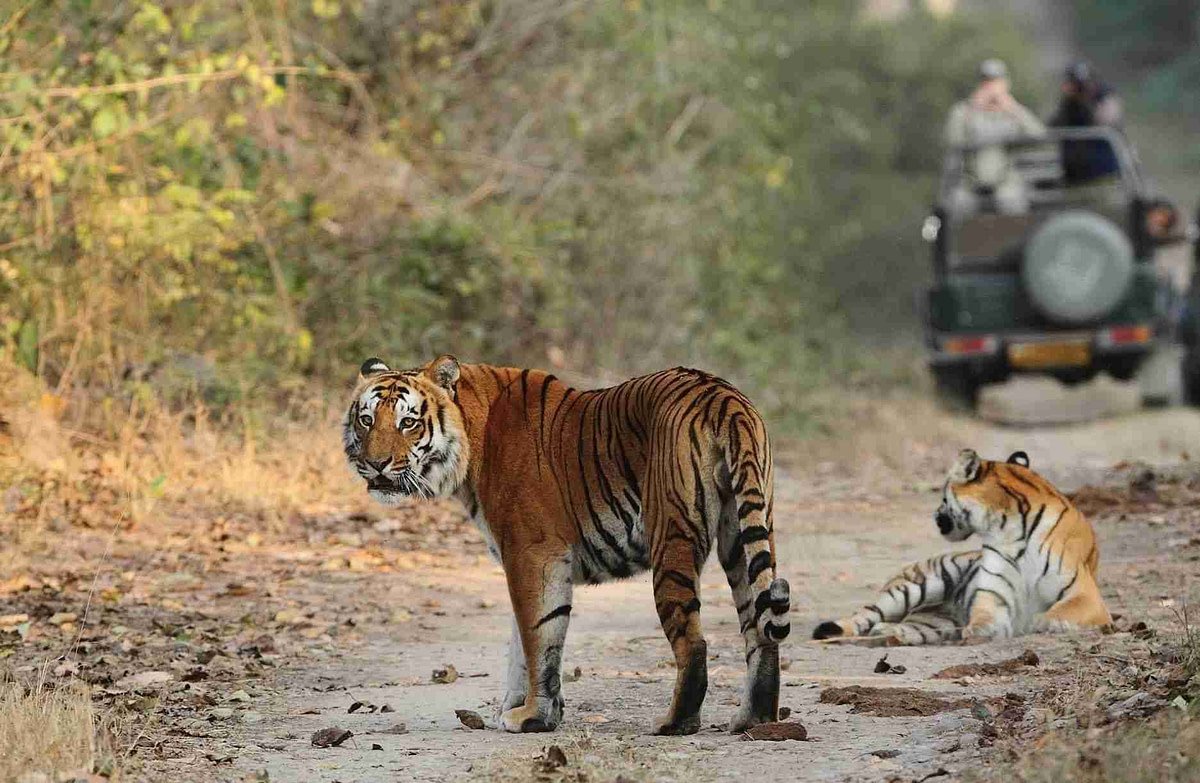
Jim Corbett National Park is divided into multiple zones, each offering a unique wildlife experience. Here are the primary zones you can choose from:
- Dhikala Zone: Known for its diverse wildlife, including tigers and elephants.
- Jhirna Zone: Ideal for birdwatching and spotting leopards.
- Bijrani Zone: Famous for its rich flora and fauna.
- Durga Devi Zone: Home to the elusive Mahasheer fish and wildlife.
- Dhela Zone: Offers a peaceful, less crowded safari experience.
Consider your preferences and interests when selecting your safari zone, as each one has its own charm.
6. Safari Timings and Seasons
The safari experience at Jim Corbett varies with the changing seasons. Safaris are conducted during two time slots:
- Morning Safari: A great opportunity to witness wildlife during their most active hours.
- Evening Safari: Perfect for capturing stunning sunset moments and nocturnal animals.
The park remains open from mid-November to mid-June, so plan your visit accordingly. The best time to visit is from November to February when the weather is pleasant and the chances of wildlife sightings are high.
7. Ticket Prices and Policies
Jim Corbett National Park offers a range of ticket options, including different rates for Indian and foreign tourists. The prices vary for different safari zones and can be found on the official website. Keep in mind the park's rules and regulations, including
maintaining silence and not disturbing the animals.
8. What to Expect on Your Safari
As you embark on your safari adventure, be prepared for a captivating journey. You may encounter majestic tigers, playful elephants, graceful deer, and a plethora of bird species. Make sure to carry your camera to capture these unforgettable moments. Remember
to maintain silence and follow the guide's instructions for a safe and responsible safari.
9. Tips for a Successful Safari
To make the most of your visit to Jim Corbett National Park, consider the following tips:
- Dress in earthy tones to blend in with the surroundings.
- Carry a pair of binoculars for birdwatching.
- Use insect repellent to avoid bites.
- Stay hydrated and bring some snacks.
- Respect the wildlife and maintain a safe distance.
10. Where to Stay Near Jim Corbett National Park
Jim Corbett offers various accommodation options, including forest lodges, resorts, and hotels. Some popular choices include the Dhikala Forest Lodge, Jim's Jungle Retreat, and The Golden Tusk. Booking your stay in advance is recommended, especially during
the peak tourist season.
11. Exploring Beyond the Safari
While the safari is undoubtedly the highlight of your trip, Jim Corbett National Park has more to offer. Explore the lush landscapes, go on nature walks, visit the Corbett Museum, or indulge in a little adventure by trying river rafting or fishing in the
nearby areas.
12. Conclusion
Your Jim Corbett National Park online safari booking is the key to unlocking the wonders of the wild. With the convenience of online booking and the information provided in this article, you're all set to make your visit a memorable one. Get ready to be
enthralled by the captivating beauty of nature and wildlife.
13. Frequently Asked Questions (FAQs)
Q1: How do I book an online safari ticket at Jim Corbett National Park?
To book your online safari ticket at Jim Corbett National Park, visit the official website, create an account or log in, select your preferred safari zone and date, provide the necessary details, and make the payment. You will receive an e-ticket via email.
Q2: What is the best time to visit Jim Corbett National Park for a safari?
The best time to visit Jim Corbett National Park is from November to February when the weather is pleasant, and the chances of wildlife sightings are high.
Q3: Are there any age restrictions for safari bookings?
Yes, there are age restrictions for safari bookings. Children below 12 years are not allowed on safaris, and the minimum age for an elephant safari is 5 years.
Q4: Can I change the safari date after booking?
Once your safari is booked, the date cannot be changed. Make sure to choose your date carefully during the booking process.
Q5: What should I do if I encounter a wild animal during the safari?
If you encounter a wild animal during the safari, maintain silence, and follow the guide's
|
Posted by
Sudhir Sharma
on
November 03, 2023

When it comes to experiencing the enchanting wilderness of India, few places can match the allure of the Jim Corbett National Park. Named after the legendary hunter-turned-conservationist Jim Corbett, this national park is a haven for wildlife enthusiasts
and adventure seekers. If you're planning a visit to this mesmerizing destination, you must know how to book a Jim Corbett Safari. In this comprehensive guide, we will walk you through the steps, options, and essential tips to ensure your safari adventure
is a memorable one.
Understanding the Jim Corbett National Park

Before delving into the details of booking a safari, let's get acquainted with the majestic Jim Corbett National Park. Nestled in the heart of the Himalayan foothills in Uttarakhand, this protected area spans over 520 square kilometers. It's renowned
for its diverse flora and fauna, making it one of the oldest and most prestigious national parks in India. The park is home to an impressive range of wildlife, including Bengal tigers, leopards, elephants, and over 600 species of birds. It's a paradise for
nature lovers and wildlife photographers.
Types of Jim Corbett Safaris
To make the most of your visit, it's crucial to choose the right safari type. The Jim Corbett National Park offers several options to cater to different preferences:
1. Jeep Safari

A Jeep Safari is one of the most popular ways to explore the park. You can book a private Jeep for an exclusive experience or share it with fellow travelers. The open-top Jeeps allow you to get closer to the wildlife while maintaining safety.
2. Canter Safari
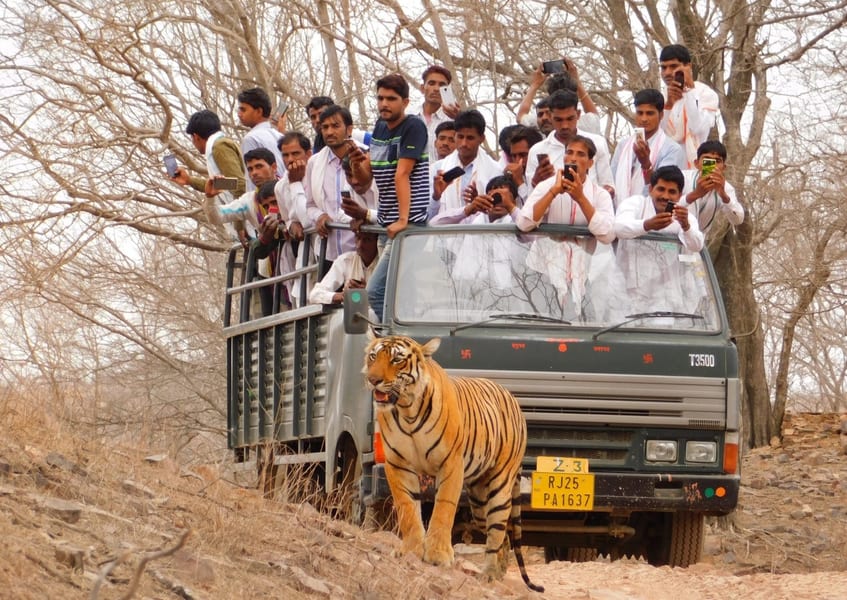
The Canter Safari is a more budget-friendly option, ideal for larger groups. These vehicles can accommodate up to 16 people and are perfect for those looking for a shared adventure.
3. Elephant Safari

For a unique and eco-friendly experience, consider an Elephant Safari. It allows you to venture deep into the jungle, giving you a distinct perspective and a chance to observe wildlife from a new vantage point.
4. Dhikala Zone Safari
The Dhikala Zone is known for its diverse biodiversity and magnificent landscapes. It's a great choice if you want to explore different ecosystems and increase your chances of spotting a variety of wildlife.
Booking a Jim Corbett Safari
Now that you've decided on the type of safari you'd like to embark on, here are the steps to book your Jim Corbett Safari:
1. Online Booking
The most convenient way to book your safari is through the official website of the
Jim Corbett safari booking. You can check the availability of safaris, select your preferred date and time, and make a secure online payment.
2. Offline Booking
If you prefer a more personalized approach, you can visit the park's office or contact them via phone at
+91 7014717217 to inquire about safari availability. However, keep in mind that offline bookings may have limited availability, so it's advisable to book well in advance.
3. Safari Zones
The Jim Corbett National Park is divided into several zones, each offering a unique wildlife experience. You need to select the safari zone that aligns with your preferences. Popular zones include Dhikala, Bijrani, Jhirna, and Durga Devi.
4. Timings
Safaris in Jim Corbett have specific timings for entry. Morning and evening safaris are the norm, with different zones offering different time slots. Be sure to arrive at the designated entry gate well in advance.
5. Permits and Identification
To enter the park, you'll need to carry a valid government-issued identification along with your safari permit. Make sure you have these documents ready before you embark on your adventure.
6. Rules and Regulations
Respect for nature and wildlife is of utmost importance in the park. Follow the rules and regulations provided by the authorities, such as not littering and maintaining silence during the safari.
Tips for an Unforgettable Safari Experience
Here are some valuable tips to enhance your Jim Corbett Safari experience:
-
Clothing: Wear earthy tones and avoid bright colors to blend in with the surroundings.
-
Binoculars: Bring binoculars to observe wildlife from a distance.
-
Camera: Don't forget your camera to capture those incredible moments.
-
Local Guide: Consider hiring a local guide for a deeper understanding of the park and its inhabitants.
-
Patience: Wildlife sightings can be unpredictable, so patience is key.
-
Respect: Always maintain a safe distance from the animals and avoid disturbing them.
Conclusion
Embarking on a Jim Corbett Safari is an adventure of a lifetime, allowing you to connect with nature in its purest form. By understanding the types of safaris, the booking process, and adhering to essential guidelines, you can ensure a safe, exciting,
and memorable journey. Make the most of your visit to the Jim Corbett National Park, and you'll return with cherished memories and a newfound appreciation for India's remarkable wildlife.
Plan your Jim Corbett Safari today and get ready to explore the mesmerizing wilderness that Jim Corbett National Park has to offer.
|
Posted by
Yog Sutra Rishikesh
on
October 24, 2023

Comprehensive Guide to Yoga in Rishikesh: Yoga Retreats, Teacher Training, and Drop-In Classes
Nestled in the Himalayas, Rishikesh is a tranquil haven renowned as the global epicentre of yoga. Whether you're a novice seeking solace or a seasoned practitioner yearning for more profound
wisdom, Rishikesh offers an array of transformative yoga experiences. This guide will assist you in navigating the rich world of Yoga in Rishikesh.
Yoga Retreats: A Haven for Inner Retreat
Escape the mundane and immerse yourself in the extraordinary with a Yoga Retreat in Rishikesh. These immersive experiences, ranging from
3 Days to
10 days Yoga Retreat in Rishikesh, provide a harmonious blend of yoga, meditation, and holistic practices. Amidst serene landscapes, discover inner peace and rejuvenation, leaving you refreshed and revitalized.
Yoga Teacher Training: Ignite the Teacher Within
For those aspiring to share the profound wisdom of yoga, the
200-Hour Yoga Teacher Training is your gateway to enlightenment. Led by experienced instructors, this program delves deep into yoga philosophy, asanas, pranayama, meditation, and the art of teaching. Graduates emerge as certified yoga teachers, empowered
to guide others on their transformative journeys.
Drop-In Yoga Classes: Flexibility in Practice
Embrace the freedom to practice at your own pace with
Drop-In Yoga Classes in Rishikesh. Catering to all levels, from beginners to seasoned practitioners, these classes offer a balanced session guided by expert instructors. Bask in the holistic benefits of yoga in a welcoming and inclusive environment.
Choosing the Right Path: Tips for Yogic Enlightenment
-
Instructor Expertise: Ensure instructors are certified and have a solid foundation in yoga philosophy and practice.
-
Location Matters: Select a retreat or training centre that resonates with your energy - a tranquil ashram or a
modern studio.
-
Curriculum Depth: For teacher training, seek a comprehensive curriculum covering philosophy, anatomy, teaching
methodology, and hands-on experience.
-
Community Connection: Look for a centre that fosters a sense of community and camaraderie among participants.
Yog Sutra Rishikesh: Your Gateway to Yogic Wisdom
At Yog Sutra Rishikesh, we embody the essence of yoga in its purest form. Our offerings, including Yoga Retreats, 200-Hour Yoga Teacher Training, and Drop-In Yoga Classes, are meticulously
designed to nurture your spiritual growth and well-being.
Embark on this transformative journey with us. Elevate your practice, enlighten your soul, and discover boundless potential within.
|
Posted by
Sudhir Sharma
on
October 03, 2023

Rajasthan, India's desert state, is known for its palaces, historical monuments, and rich wildlife. The state is home to several wildlife sanctuaries, including Ranthambore National Park, Sariska Tiger Reserve, Keoladeo Ghana National Park in Bharatpur,
Desert National Park, Mount Abu Wildlife Sanctuary, Kumbhalgarh Wildlife Sanctuary, and Bikaner Camel Breeding Farm. Ranthambore National Park is renowned for its tigers and lakes, while Sariska Tiger Reserve offers dense forests and elusive big cats. Keoladeo
Ghana National Park attracts migratory birds from Siberia. Other notable sanctuaries include Mount Abu Wildlife Sanctuary, Kumbhalgarh Wildlife Sanctuary, and Bikaner Camel Breeding Farm. Rajasthan is a paradise for wildlife enthusiasts, offering an abundance
of treasures to discover.
1. Ranthambore National Park:
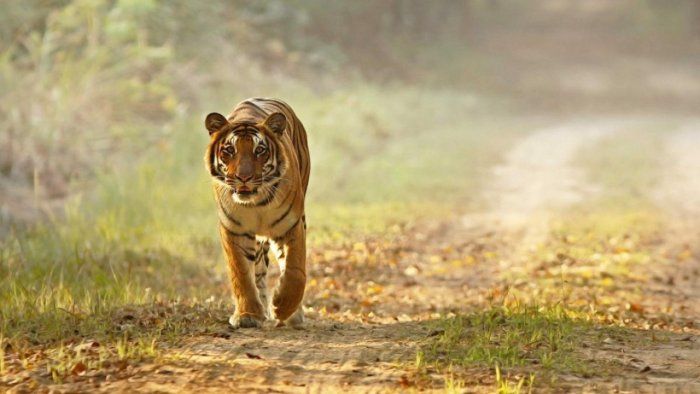 Ranthambore
Located in the Sawai Madhopur District, Ranthambore
National Park is one of India's most famous wildlife destinations. It is renowned for its population of Bengal Tigers, making it a top choice for tiger enthusiasts and wildlife photographers. In addition to tigers, the park is home to Indian Leopards
and a rich variety of bird species, including peafowls, owlets, and eagles. The park's rugged terrain, ancient ruins, and picturesque lakes add to its allure, providing a unique setting for wildlife encounters.
2. Sariska Tiger Reserve:
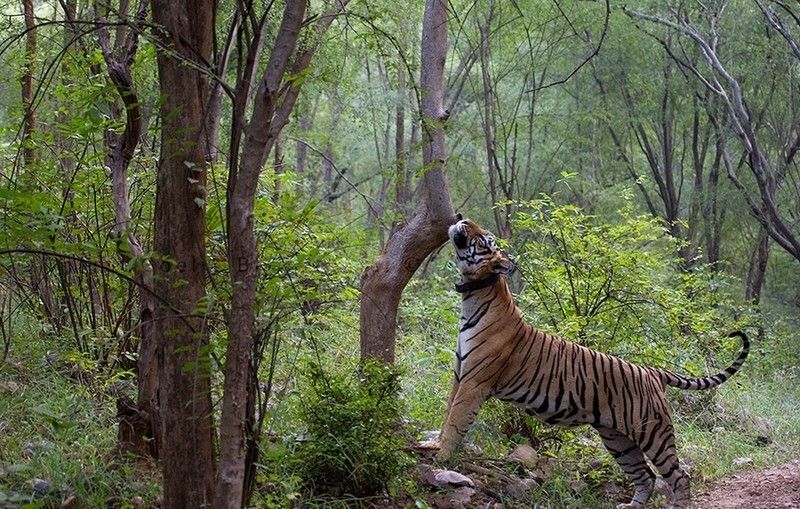 Sariska Safari
Situated in the Alwar District, Sariska Tiger Reserve is another important tiger conservation area in Rajasthan. While it is famous for its Bengal Tigers, the reserve also hosts Indian Leopards, striped hyenas, and a diverse range of wildlife. The
landscape varies from dry deciduous forests to rocky hills, offering a diverse habitat for numerous animal and bird species.
Suggested: Sariska Safari Booking
3. Keoladeo National Park (Bharatpur Bird Sanctuary):
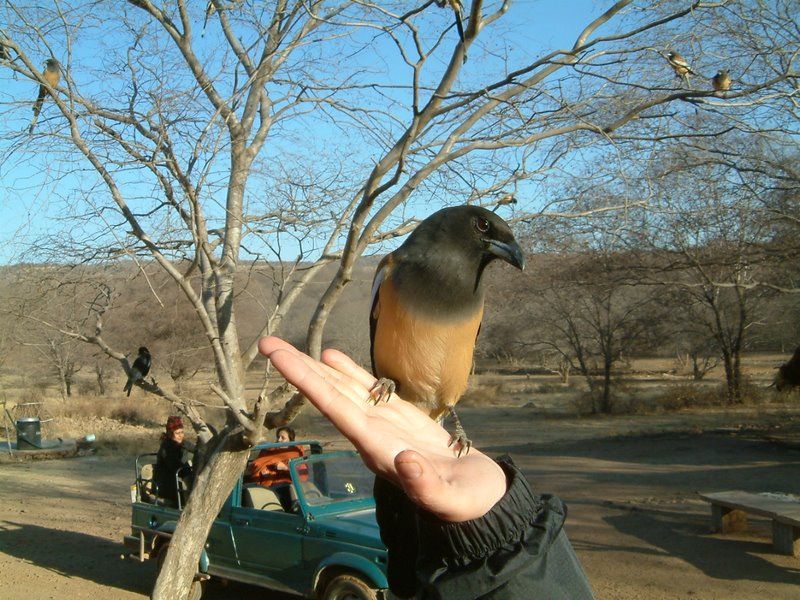 Bharatpur
Located in Bharatpur, Keoladeo National Park, also known as Bharatpur Bird Sanctuary, is a UNESCO World Heritage Site and a birdwatcher's paradise. It is renowned for hosting an incredible array of migratory birds, including the rare Siberian Cranes,
along with various waterfowl. The park's marshes, lakes, and wetlands provide a haven for these avian visitors and offer fantastic opportunities for birdwatching.
4. Desert National Park:
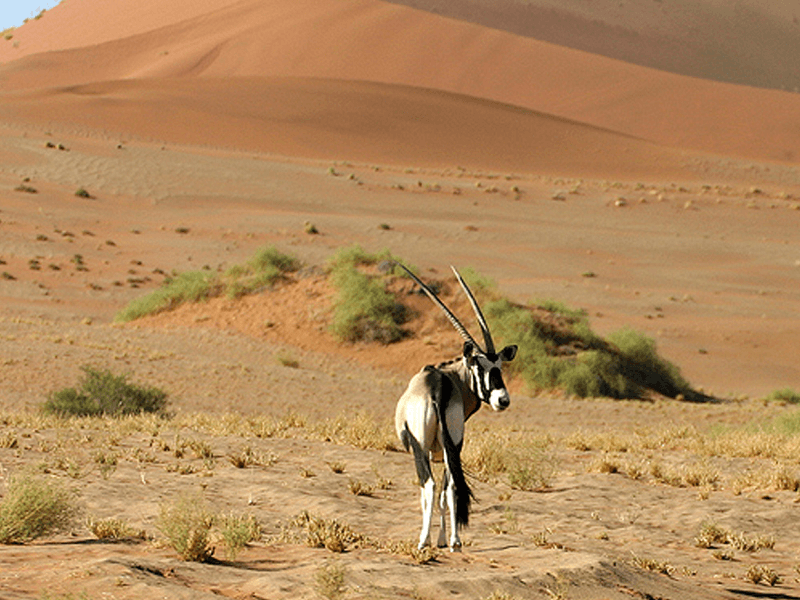 Jaisalmer Desert wildlife
Found in the desert city of Jaisalmer, the Desert National Park is a unique ecosystem that showcases the adaptations of desert wildlife. Notable species include the Great Indian Bustard, Indian Gazelle, and desert foxes. The
vast sand dunes and arid landscapes create a stunning backdrop for observing the remarkable flora and fauna of the Thar Desert.
5. Darrah Wildlife Sanctuary:
 Darrah Wildlife Sanctuary
Located in the Kota District, Darrah Wildlife Sanctuary is known for its diverse wildlife, including wolves, leopards, sloth bears, and various bird species. The sanctuary's rugged terrain, dense forests, and tranquil surroundings make it an ideal
destination for nature enthusiasts and wildlife lovers.
6. Kumbhalgarh Wildlife Sanctuary:
 Kumbhalgarh Wildlife Sanctuary
Situated in the Rajsamand District, Kumbhalgarh Wildlife Sanctuary is famous for its population of the Indian Wolf, Indian Sloth Bear, and a variety of deer species. The sanctuary's lush greenery and proximity to the historic Kumbhalgarh Fort make
it a unique combination of natural and cultural heritage.
7. Mount Abu Wildlife Sanctuary:
 Mount Abu Wildlife Sanctuary
Nestled in the Sirohi District, Mount Abu Wildlife Sanctuary offers a cool and refreshing escape from the arid landscapes of Rajasthan. The sanctuary is known for its Indian Leopard population, Sloth Bears, and a wide variety of bird species. The
dense forests and serene surroundings make it a delightful destination for wildlife enthusiasts.
8. Tal Chhapar Sanctuary:
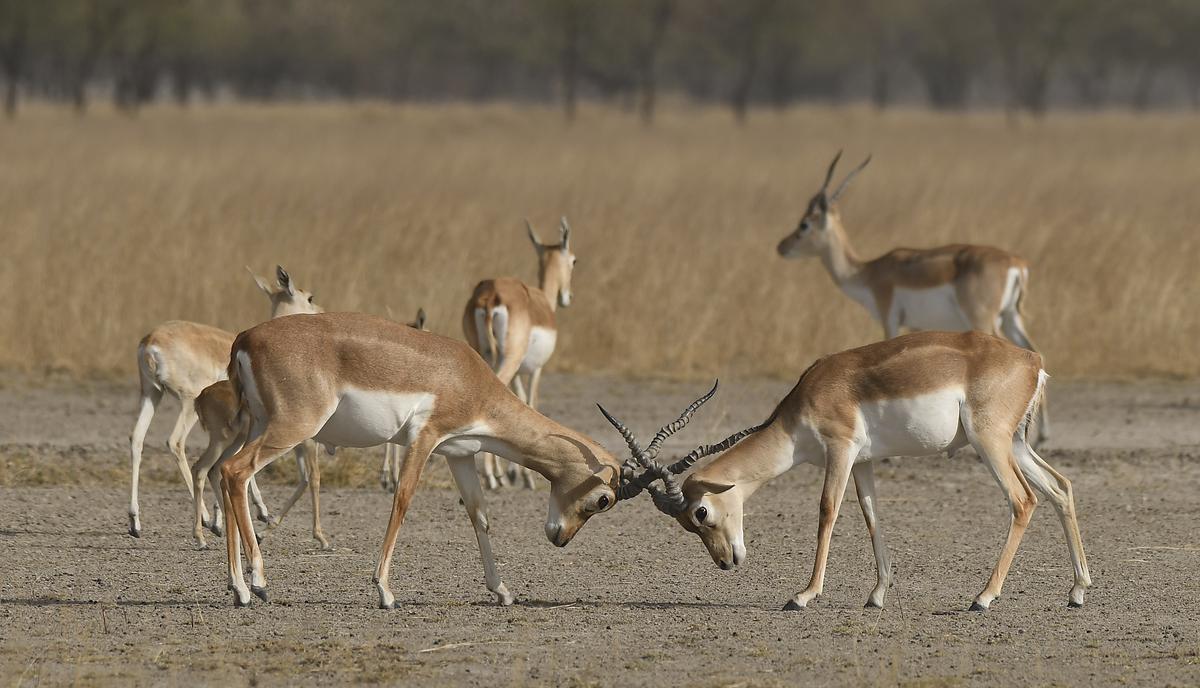 Tal Chhapar Sanctuary
Found in the Churu District, Tal Chhapar Sanctuary is primarily known for its thriving population of Blackbuck, a graceful and endangered antelope species. The sanctuary also hosts foxes and serves as a stopover for numerous migratory birds during
their seasonal journeys.
9. Sita Mata Wildlife Sanctuary:
 Sita Mata Wildlife Sanctuary
Located in the Pratapgarh District, Sita Mata Wildlife Sanctuary is characterized by its hilly terrain and rich biodiversity. The sanctuary is home to leopards, Chinkara (Indian Gazelle), and an impressive array of plant species, making it an ideal
destination for both wildlife enthusiasts and botany enthusiasts.
10. Jaisamand Sanctuary:
 Jaisamand Sanctuary
Situated in the Udaipur District, Jaisamand Sanctuary offers a unique blend of terrestrial and aquatic ecosystems. While it is known for the Indian Leopard and Sloth Bear populations, it is equally famous for the diverse aquatic life found in the
expansive Jaisamand Lake. This sanctuary provides a scenic and tranquil environment for observing both wildlife and aquatic species.
|
Posted by
Epic Yatra
on
September 20, 2023
The Chardham Yatra, a sacred pilgrimage to Yamunotri, Gangotri, Kedarnath, and Badrinath, is a spiritual journey that millions undertake each year. However, for those seeking a truly luxurious and convenient experience, there's an option that takes
this holy adventure to a whole new level - the Luxury Chardham Yatra by Helicopter.
|